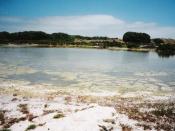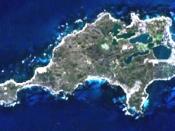In the early 1800s a number of French explorers visited the south west coast of Australia. The British, who were at war with the French at that time, became concerned that a French presence in the south west of the continent could endanger trade with the eastern colonies. In 1819 Phillip Parker King and his crew patrolled the southwest, although it was not until his second voyage in 1822 that they made landfall on "Rottenest".
Settlement of the Swan River Colony began in 1829, and interest was shown almost immediately in Rottnest as a secure place with the potential for salt harvesting, farming and fishing. Rottnest was surveyed with provision for a town in 1830, and in 1831 William Clarke and Robert Thomson took up town lots and pasture land. Thomson, for whom Thomson Bay is named, took up residence on the Island in 1837.
The notion to use Rottnest as a confinement place for Aboriginal prisoners, was suggested by James Stirling.
In August 1838 Constable Lawrence Welch, under the new title Superintendent of the Government Establishment, Rottnest, took six Aboriginal prisoners to Rottnest. They were to erect suitable dwellings, fish and collect salt. Buoyeen had been sentenced for assault; Mollydobbin, Tyoocan and Goordap for theft; Helia for murder; and Cogat for stealing butter.
However, shortly after their arrival, all six prisoners escaped to the mainland in Thomson's boat. Helia was drowned in the crossing, but the other five made is safely ashore. When he realised the prisoners were gone, Welch lit signal fires to attract the attention of people at Fremantle. The signals were seen, but because similar signals were used to announce that whales were on the coast, no one took much notice.
Despite this experience Governor Hutt decreed by 1839 that Rottnest was to be regarded as...



Comment
this all sounds like just a summary, next time try to put some of your thoughts in it, but overall it's good.
0 out of 0 people found this comment useful.